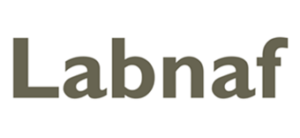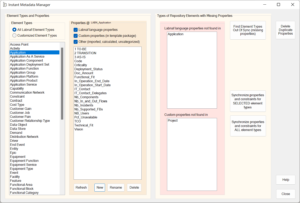You are requested to add application properties, populate the architecture repository, create reports, charts, and dashboards TODAY.
How shall you do this? Watch this video
To optimize decision making, organizations produce reports and charts by leveraging the properties and connections of their applications, processes, capabilities, information items, projects etc.
Labnaf users can instantly…
- View the list of existing element types.
- View a filtered list of element properties for the selected element type.
- Add, rename and delete custom element properties instantly, on the spot.
- Add custom properties that reuse your preferred property/tagged value types.
- Shows which types of elements stored in the database are out of sync with the metadata definitions.
- Resynchronize elements stored in the database with their metadata definition.
- Delete duplicate properties.
- Manage metadata in an SaaS environment without ever leaving the SaaS session.
The presence of properties could stem from various sources. We classify these properties as follows:
Common Properties
- Some properties, like criticality, TCO, efficiency etc. are quite common.
- Common properties are built in the Labnaf modeling language.
Custom properties
- Each specific organization usually adds custom properties to fulfil their specific catalog management and reporting requirements.
- These custom property requirements evolve over time following the employee turnover and the users’ feedback.
Other properties
- These are properties that have been imported, generated (implicit data), calculated, or created manually for individual elements e.g. for specific processes.



